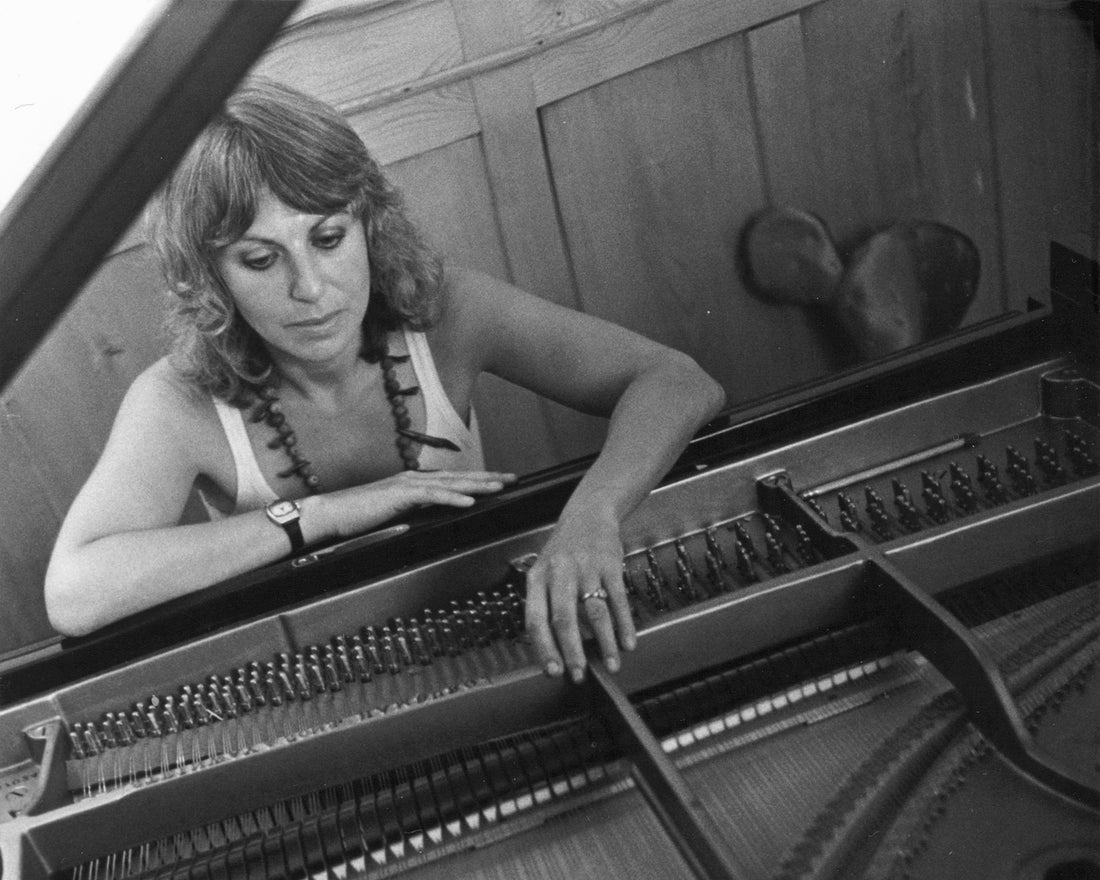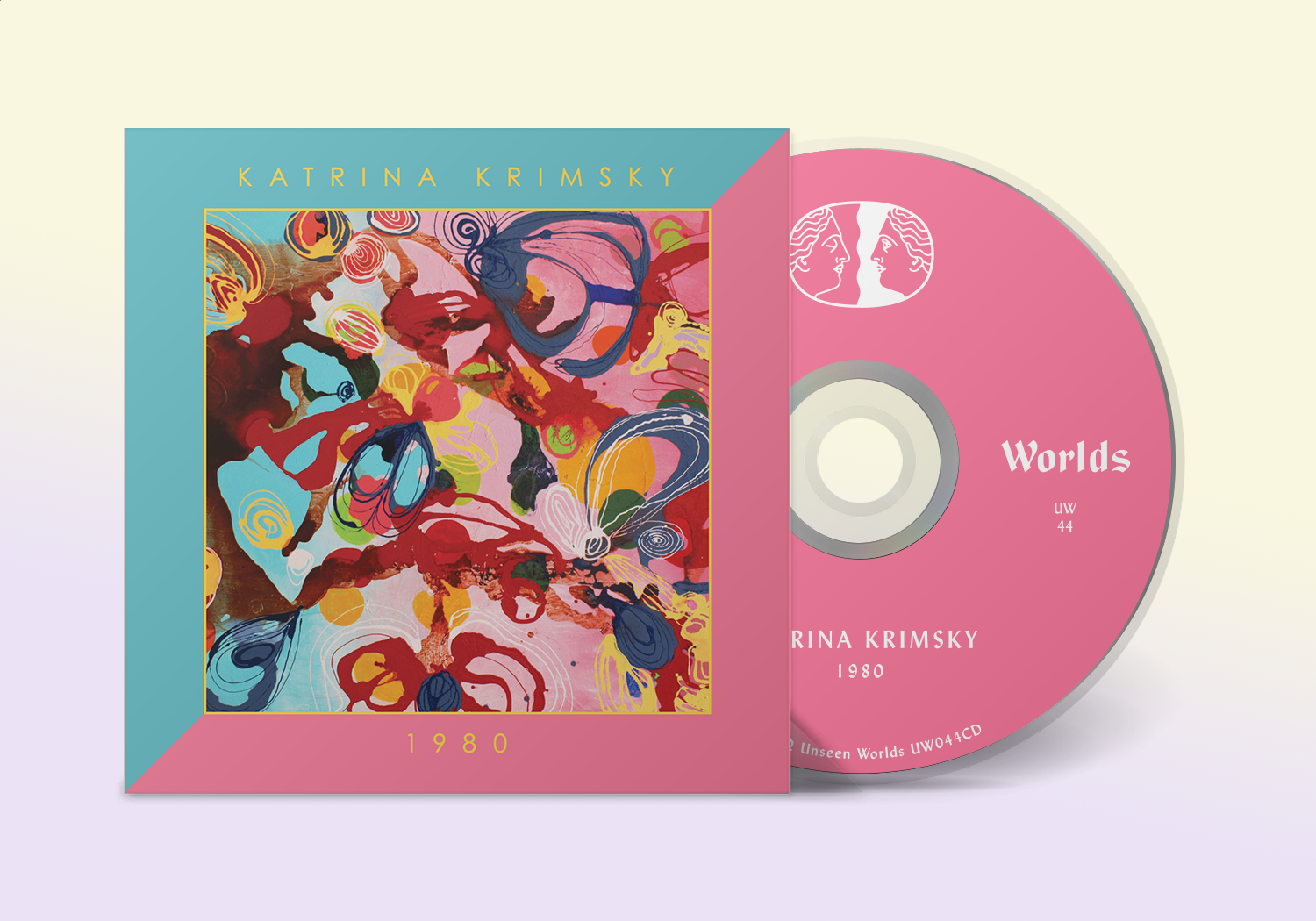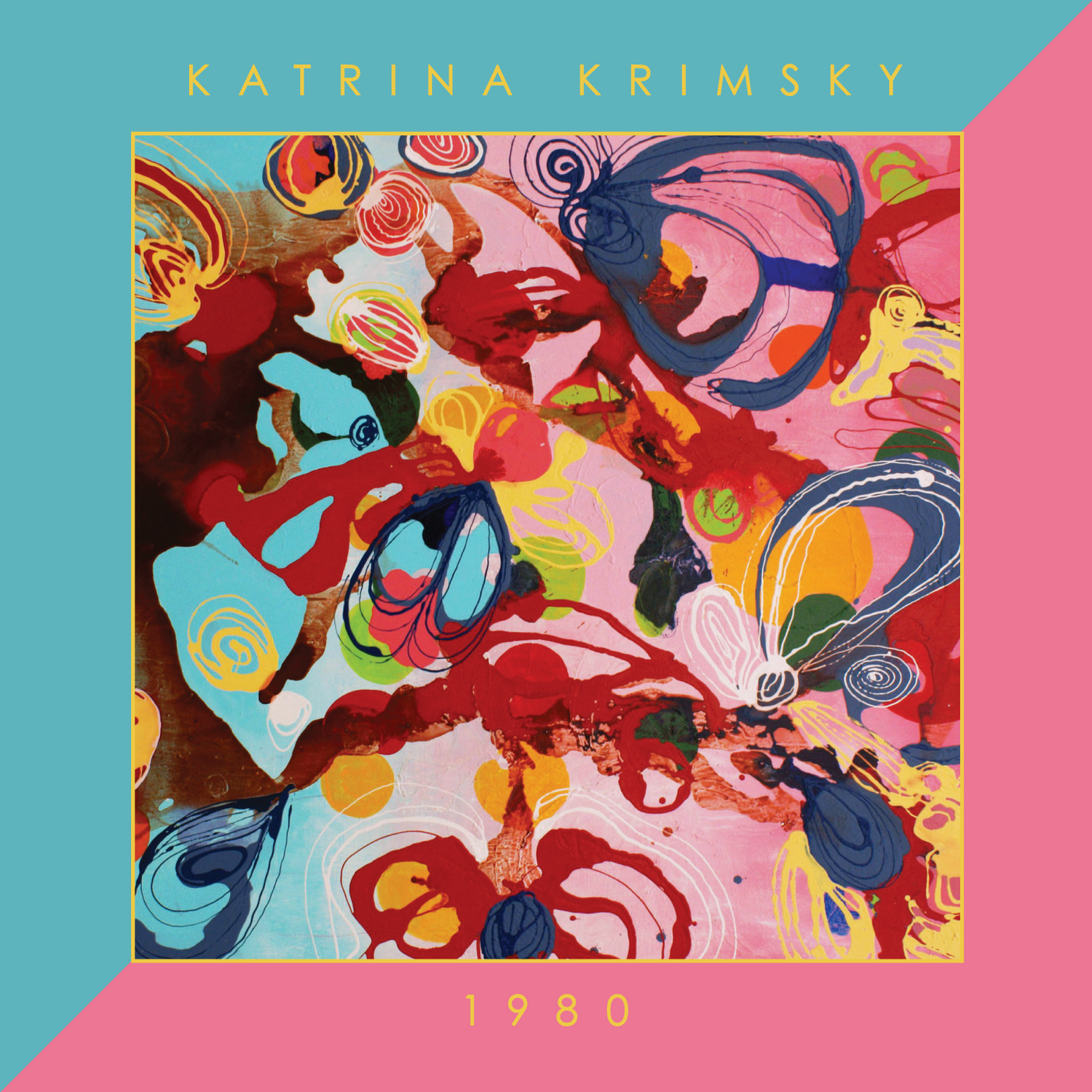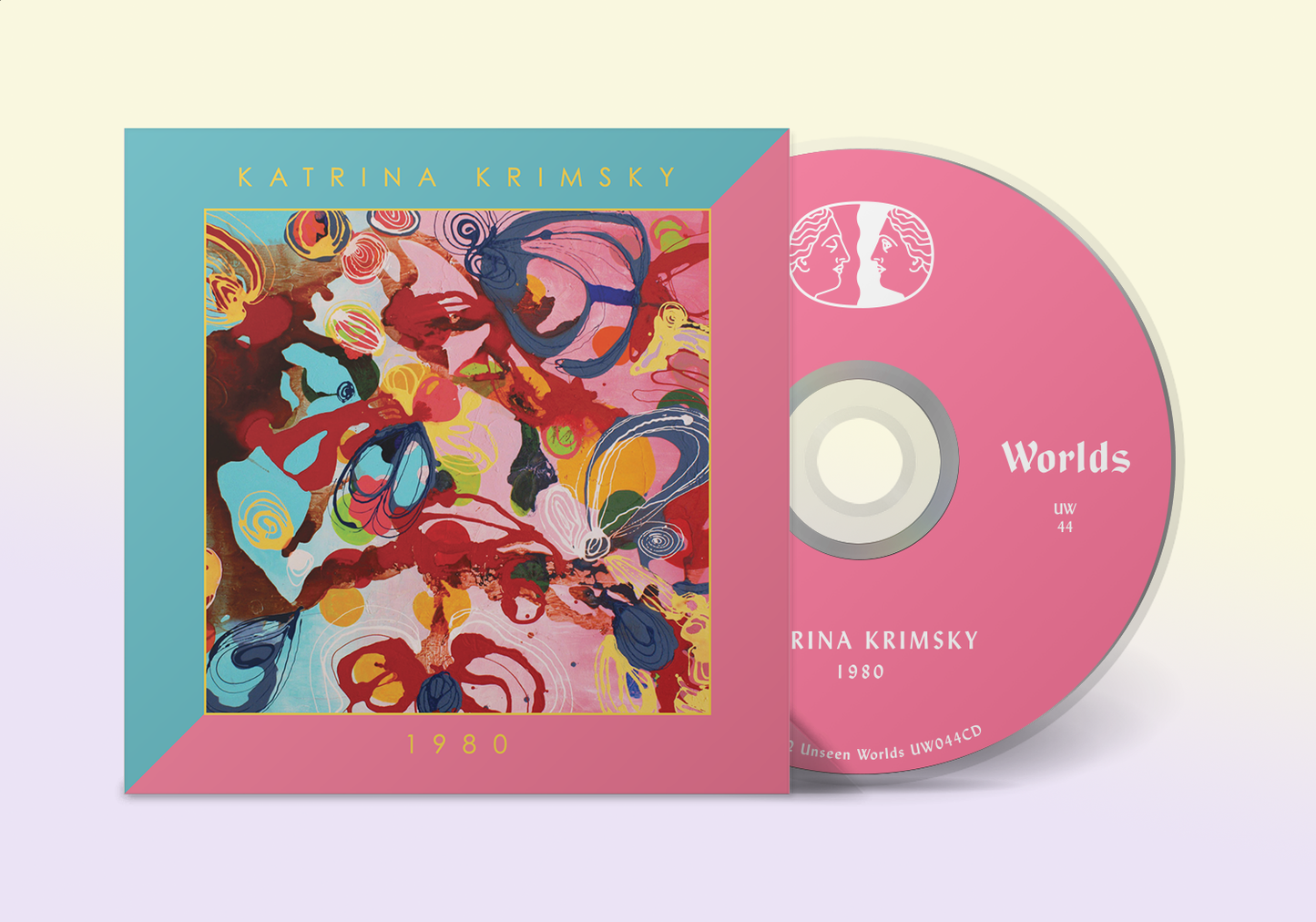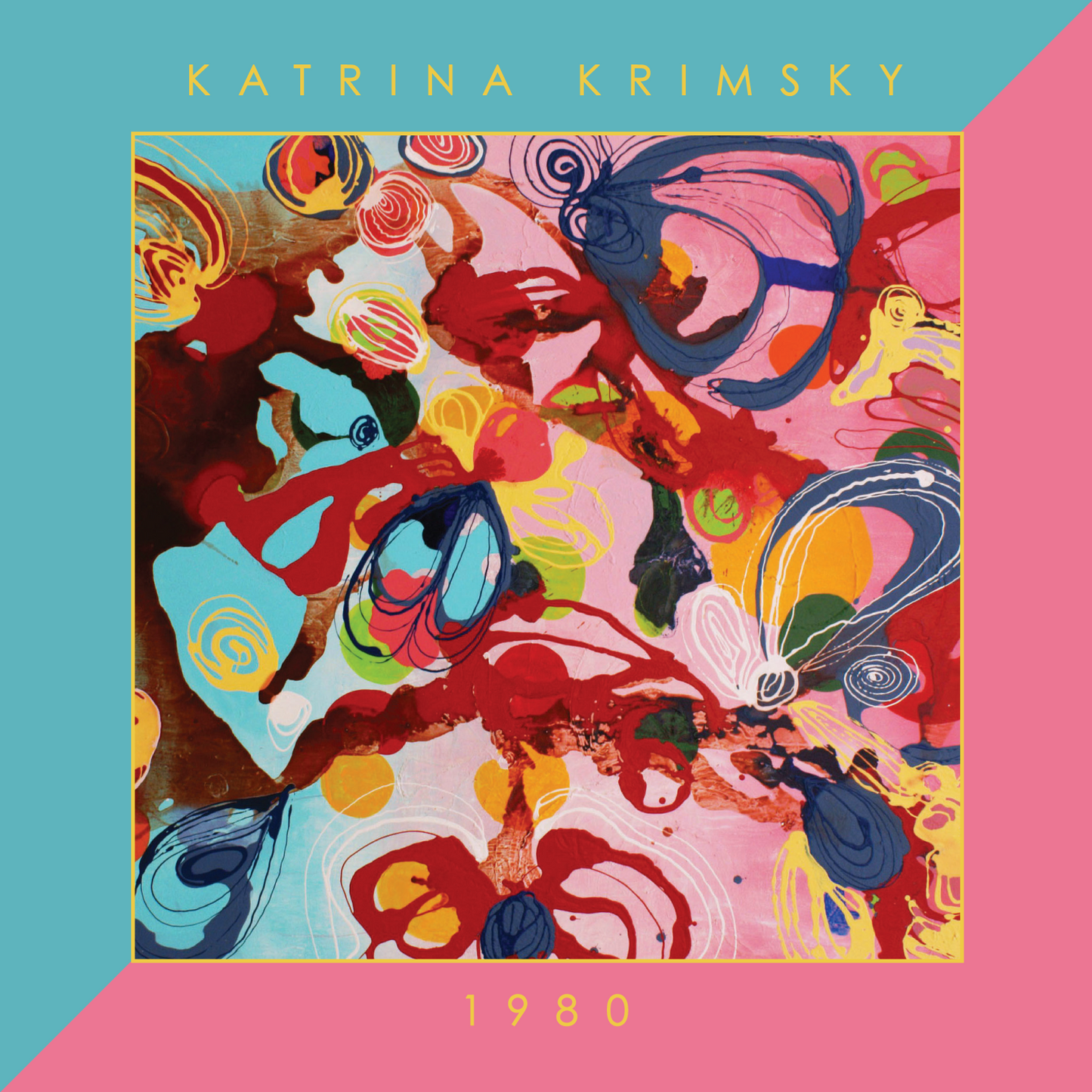A sonic gravity born of rich, low, sustained ostinato chords bends our listening space-time and leads us into track one of 1980, a major improvisational opus, called Soundscape, by pianist-composer, Katrina Krimsky. Melodies with rich tonal elaborations are punctuated by repeated high tones, more elaborations follow, and then a settling sound solace frames extended chromatic expansions; it’s like listening into the details of an intricate sound mandala. The changes are tight, scene after scene, and each modulation of tonal emphasis is carefully placed to reveal a new sonic sunrise. This is, indeed, a landscape of sound, a soundscape; but it is a rolling landscape for imaginative listeners, shifting with clarity from one sonic geography to another. Each scenario has its particular character; some are delicately pointillistic, some roar with sound mass intensity, and always, the key to finding new forms in this music lies in an intense focus on exploring resonances in the landscape of the piano. A principal through line in all the music of 1980, and indeed a key component of Krimsky’s performer-composer practice, is finding particular resonances that are spontaneously revealed by sustaining tonalites in close proximity to each other on the piano, powered by rhythmic repetitions—in Soundscape they emphasize seven-beat cycles and melodic shapes—to reveal inner spectral intricacies, special things that ring in these resonant sound forms, from which Krimsky draws the power and energy needed to fuel the forward motion of an always emerging musical form.
Indeed, the physical structure of the piano provides a soundscape replete with opportunities for discovering resonant forms. “You come across something and then work with it,” said Katrina in conversation with me, “it is very repetitive because you stay with that.” It’s about hearing, it’s not about notes. It’s a totally free technique of getting tones close together, riding over an ostinato, trying to get close, get the resonances going, and then, everything opens up, “makes me free, another dimension happens.” It’s a process of using resonances to get to a feeling, to approach the piano as sound. Ideas about resonance have always been important in music, of course, and when approached with enough conceptual breadth, they extend beyond music, perhaps to an art and music blend, and beyond that, to universal morphogenesis.
Make no mistake, this is not naïve pattern music; there are patterns, and then, there are patterns. When artfully-constructed patterns are repeated and expanded in recombination, they open worlds. In Katrina’s case, her beautifully constructed patterns are made cyclical to enable discovering and working with resonances. “It’s a search,” finding things, finding new emerging colors; “it’s a kind of meditation, they’re not precomposed.” This is a kind of musical freedom that entails finding boundaries that differentiate sounds from their environments; and then, the music changes into something different, a new thing.
As we listen actively and imaginatively, reflecting the performer’s lead through various sound colors and highlights, we hear the musical form unfold, a rich inner journey bookended—perhaps in a subtle acknowledgement of jazz influences—by material at the beginning and end that reference each other. Nothing is restated completely literally, and finally we land on a soft and thoughtful ending. This music is developed through improvisational performance practice, approached with a mind set of profound musical freedom; and very importantly, it is a freedom made possible and always supported by highly developed discipline and practice.
Starting at a very young age, Katrina Krimsky developed her musical self along a pathway of strong classical, pianistic training. Highlights of her playing on the classical side include her wonderful recording of Samuel Barber’s monumental Sonata for Piano, Op. 26, (Transonic Records 3008, 1975), a composition that is a virtual dictionary of early and mid-Twentieth Century composition techniques, first performed by Vladimir Horowitz in 1949 and 1950. Another example is her equally wonderful recording of A próle do bébé (The Baby’s Family) by Heitor Villa-Lobos, (1750 Arch Records, S-1789, 1982). (North/South Consonance has rereleased Katrina Krimsky Plays Barber and Villa-Lobos.) After studying at the Eastman School of Music, Krimsky toured with the Ars Nova Trio and soon found herself becoming immersed in the European contemporary classical scene, and with composers like Karlheinz Stockhausen, Luc Ferrari, and many others. The later 1960s brought collaborative performances and recordings with gradual-process innovators, like Terry Riley and La Monte Young, and beyond that, great jazz musicians like Woody Shaw and others. Her musical world was opening even wider. Still, in all this, her advanced technical and interpretive skills were always evident, and her sense of lyricism in all music, quite profound.
1980 was a turning point for Katrina. It was the year in which she burst out from the restrictions of her established career in classical and contemporary traditions into free expression through improvisation. Her individual style began to reflect a wide range of sources: jazz, non-Euro-American music, the new minimalism, and more experimental forms. In 1980, she was invited to do a workshop and give a concert at the legendary Creative Music Studio in Woodstock, NY. (CMS was founded originally in 1971 by Karl Berger and developed in its Woodstock home by Karl with Ingrid Sertso starting in 1973.) Katrina traveled from where she was living in Zürich at the time and found an open environment at CMS in which to create anew. The tracks we hear on 1980 were all recorded live in a concert at the CMS in June of that year. What emerged was an original musical style that has remained since then continuously recognizable as Krimsky.
Apparitions maintains many of the principles of development heard in Soundscape, but its materials are approached somewhat differently. Katrina had materials in mind in advance for this one that are stated in the opening and ending and developed in between However, they are not notated. We hear a focus on right hand ostinati, freeing the left hand to play a different role from what we hear in the other 1980 tracks. Contrasting lines with wide intervals often followed by narrow half-steps illuminate the work’s particular character. A modal structure appears, but it avoids landing on a static tonal center for very long, on which we might hang our listening ears. Yet, it always maintains a clear sense of modally-melodic expressiveness. The modes and scales often exhibit symmetrical interval structures, which further undermines any illusion of a constant tonal center. Impressionistic whole-tone textures, reminiscent of Debussy, might come to mind. Patterns often move up by whole steps, without recycling, accompanied by repetitive chord patterns. All this contributes to a feeling of apparition, a kind of quizzical wandering in the sonic mind. Katrina reminds us that the unconscious can be made to come through to the foreground when one focuses on an ostinato; “I was obsessed with that upper ostinato.” Furthermore, these patterns are hard to play, they challenge one’s self as a creative performer to never give up, to stay with them vigorously, even fiercely, with power and strength. Maybe it’s a kind of duality; and then, the next thing is to play something new while maintaining the patterns, adding to them, but not allowing them to be interrupted. Apparitions is an example of a particular method of developing improvisational performance practice: composing the musical self through composing what one practices.
Stella Malu, the final track of 1980, shows yet another approach. This one is more preconceived than the other music. It’s a beautiful tune, though also raw, not tidy. We hear it developed with extraordinary flights of fancy, weaving a fabric of intertwined elaborations. In Stella Malu we experience joyous, euphoric variations. They are off the wall, ascending, descending, and amazingly, a five-beat rhythm is always maintained, unstoppably, like a train, sometimes overt, sometimes implied. Eventually, the train passes into the distance and the original theme returns. Stella Malu is the most precomposed piece on 1980, and yet one of the wildest in its sonic departures. (This performance preceded her 1981 recording of Stella Malu on ECM.)
All in all, in 1980, Katrina Krimsky has provided a beautiful set of both complimentary and differing pieces. Thankfully, Unseen Worlds, discovered this live recording in the Columbia University Library archives and has preserved it for us. I have been privileged to know Katrina, to play music with her, listen through her substantial discography, and watch her development over more than five decades. 1980 documents a key pivotal moment in her development and further solidifies her as an important performer-composer in our time.
David Rosenboom
October 6, 2021
Valencia, California
